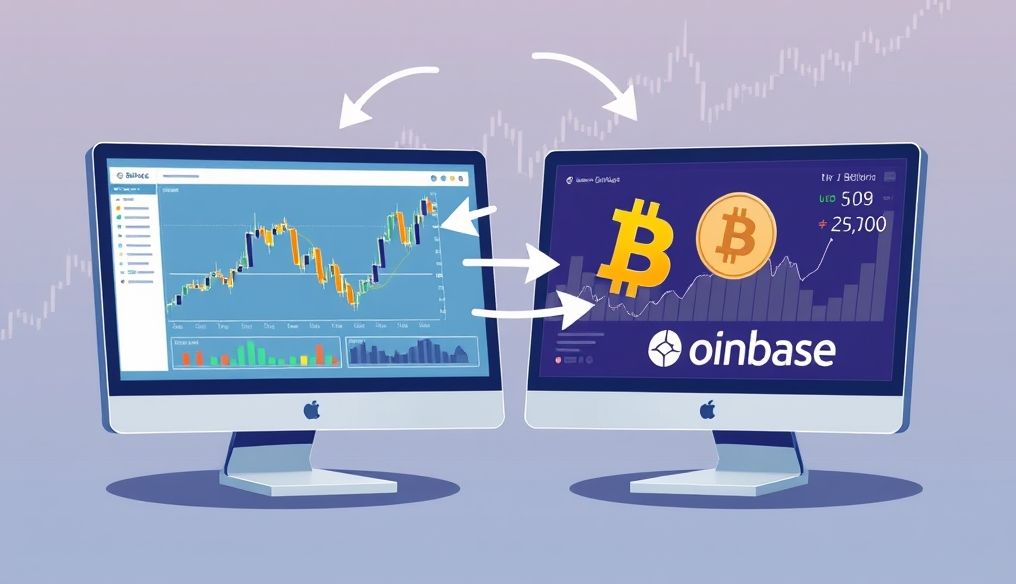Introduction to Arbitrage in Cryptocurrency Markets
Cryptocurrency markets have experienced tremendous growth in recent years, leading to the emergence of new and exciting investment opportunities. Among these opportunities, arbitrage stands out as a method to profit by exploiting temporary price differences for the same cryptocurrency across different trading platforms. In this article, we will delve into the world of cryptocurrency arbitrage, exploring its various types, associated risks, and how to implement it effectively to maximize profits.
What is Cryptocurrency Arbitrage?
Arbitrage is a trading strategy that involves buying an asset in one market and selling it in another market at the same time, to take advantage of the price difference between the two markets. In the context of cryptocurrencies, arbitrage means buying a cryptocurrency (such as Bitcoin or Ethereum) from a trading platform where its price is low, and then immediately selling it on another platform where its price is higher. The goal is to achieve a quick and virtually risk-free profit by capitalizing on temporary price discrepancies.
Illustrative Example
Suppose the price of Bitcoin on Binance is $65,000, while its price on Coinbase is $65,200. A trader can buy Bitcoin from Binance and immediately sell it on Coinbase, making a profit of $200 per Bitcoin. This is the basic idea of arbitrage.
Types of Cryptocurrency Arbitrage
There are several types of arbitrage strategies that traders can use in cryptocurrency markets, each with its own characteristics and risks:
1. Simple Arbitrage
This is the basic type of arbitrage, involving buying a cryptocurrency from one platform and selling it on another. It relies on direct price differences between platforms.
2. Triangular Arbitrage
Triangular arbitrage involves exploiting price differences between three different cryptocurrencies on the same platform. For example, if the price of Bitcoin relative to Ethereum, the price of Ethereum relative to USDT, and the price of Bitcoin relative to USDT are not in proportion to each other, a trader can exploit this imbalance to make a profit.
3. Exchange Arbitrage
This relies on exploiting price differences between different trading platforms. These differences can be due to factors such as liquidity, fees, or even differences in transaction processing times.
4. Funding Rate Arbitrage
This exploits differences in funding rates in perpetual futures contracts. A trader can buy the cryptocurrency in the spot market and sell it in the futures market, or vice versa, to profit from funding rate differences.
Factors Influencing Arbitrage Opportunities
Arbitrage opportunities in cryptocurrency markets are influenced by several factors, including:
- Liquidity: The higher the liquidity on a platform, the fewer arbitrage opportunities there are, as price differences tend to be smaller.
- Fees: Trading, withdrawal, and deposit fees affect the profitability of arbitrage. The profit from arbitrage must be greater than the fees for the strategy to be worthwhile.
- Execution Speed: Purchase and sale transactions must be executed quickly to take advantage of temporary price differences.
- Volatility: High price volatility increases arbitrage opportunities, but also increases risks.
- Regulations: Regulations and laws regarding cryptocurrencies vary from country to country, which can affect arbitrage opportunities.
Risks Associated with Cryptocurrency Arbitrage
Although arbitrage is considered a relatively low-risk strategy, it is not without risks:
- Execution Risk: Purchase and sale transactions may not be executed at the expected prices due to network delays or lack of liquidity.
- Fee Risk: Fees may be higher than expected, reducing profit or leading to a loss.
- Volatility Risk: Prices may change too quickly, making arbitrage unprofitable.
- Platform Risk: Platforms may be hacked or shut down, leading to loss of funds.
- Regulatory Risk: Regulations and laws may change unexpectedly, affecting the ability to arbitrage.
How to Implement an Arbitrage Strategy Effectively
To implement an arbitrage strategy effectively, follow these steps:
- Research and Analysis: Identify platforms that frequently have significant price differences.
- Account Setup: Open accounts on selected platforms and secure them.
- Account Funding: Deposit funds into accounts to be ready for trading.
- Use Tools: Use price tracking tools and software to quickly identify arbitrage opportunities.
- Fast Execution: Execute purchase and sale transactions quickly to take advantage of temporary price differences.
- Risk Management: Develop a risk management plan and determine the appropriate trading size.
- Continuous Monitoring: Continuously monitor prices, fees, and changes in regulations.
Arbitrage Tools and Software
There are many tools and software that can help traders implement arbitrage strategies, including:
- Price Tracking Software: Helps track prices on various platforms and identify arbitrage opportunities.
- Automated Bots: Automatically execute purchase and sale transactions based on specified criteria.
- Application Programming Interfaces (APIs): Allow access to price data and execution of orders on different platforms.
Practical Examples from the Arab and Global Markets
In the Arab market, traders can look for arbitrage opportunities between platforms such as Rain, BitOasis, and Binance. Price differences often exist between these platforms due to differences in liquidity and demand. Globally, opportunities can be found between platforms such as Coinbase, Kraken, Binance, and KuCoin.
Example: In May 2023, a difference in the price of Bitcoin was observed between the BitOasis platform in the United Arab Emirates and the global Binance platform. The price of Bitcoin was 0.5% higher on BitOasis due to increased local demand. Traders could have exploited this difference by buying Bitcoin from Binance and selling it on BitOasis.
Practical Tips for Successful Arbitrage
To achieve success in arbitrage, here are some practical tips:
- Start with Small Amounts: To avoid large losses in case of errors.
- Diversify Platforms: To reduce the risks associated with a single platform.
- Update Knowledge: Stay up-to-date with changes in prices, fees, and regulations.
- Use Limit Orders: To specify the prices at which you want to buy and sell.
- Be Patient: Do not rush into executing transactions and wait for suitable opportunities.
Conclusion
Cryptocurrency arbitrage is a profitable strategy that can help traders make profits by exploiting price differences between platforms. However, traders should be aware of the associated risks and follow best practices for risk management and effective transaction execution. Through research, analysis, fast execution, and continuous monitoring, traders can achieve success in the world of cryptocurrency arbitrage.
Disclaimer: This article is for informational purposes only and does not constitute financial advice. Readers should consult a financial advisor before making any investment decisions.




